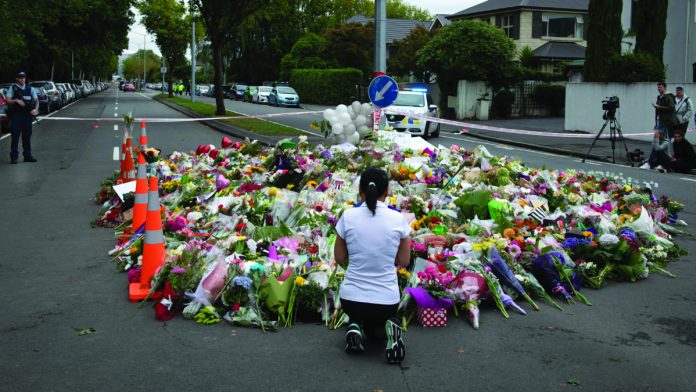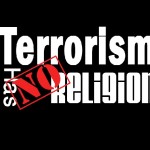Wajeeha Najam
One of the most damaging effects of Islamophobia is the reinforcement of binary divisions, casting Muslims as the “other” and non-Muslims as the normative group. This narrative is perpetuated by media portrayals, political rhetoric, and policies that associate Islam with extremism. A 2021 report by the Pew Research Center found that 52% of Americans believe Islam is incompatible with democratic values, reflecting widespread misconceptions.
Such narratives lead to the marginalization of Muslim communities, where individuals are viewed with suspicion, resulting in social exclusion. The erosion of social cohesion is another consequence, as distrust between communities grows, making integration harder. In Europe, for instance, a 2017 survey by the European Union Agency for Fundamental Rights (FRA) revealed that 39% of Muslims experienced discrimination in the past year, with many avoiding public spaces due to fear of harassment.
Muslims also encounter significant barriers in freely practicing their faith. Attacks on mosques and Islamic centers are common in Western countries. In the U.S., the Council on American-Islamic Relations (CAIR) documented over 500 anti-mosque incidents between 2014 and 2021, including vandalism, arson, and protests against mosque constructions. Muslim women who wear the hijab or niqab face workplace discrimination and public hostility.
In France, where the hijab is banned in public schools and government buildings, a 2019 study by the French National Human Rights Commission found that 60% of Muslim women wearing religious attire reported being verbally or physically assaulted. Media and political rhetoric further intensify these issues by consistently associating Muslims with terrorism. A 2020 study by the University of Cambridge analyzed news coverage and found that 78% of stories involving Muslims linked them to extremism, reinforcing negative stereotypes.
Globally, Islamophobia is not confined to the West. In countries like India, Muslims face increasing marginalization, fueled by nationalist rhetoric and policies that discriminate against them. Reports of lynchings and social boycotts have surged in recent years, as anti-Muslim sentiment becomes more pronounced. Similarly, in China, the government’s treatment of Uighur Muslims has drawn international condemnation, with widespread reports of detention camps and cultural erasure. These examples highlight that Islamophobia is a global issue, manifesting in various forms and affecting communities worldwide.
Refugees from Muslim-majority countries are particularly stigmatized, often portrayed as security threats or cultural invaders. Despite fleeing war and persecution, they are met with hostility and restrictive immigration policies. In the U.S., the Trump administration’s “Muslim ban” (2017) suspended entry from several Muslim-majority nations, citing terrorism concerns, despite data showing that the likelihood of being killed by a foreign-born terrorist in the U.S. is 1 in 3.6 million per year.
Similarly, in Europe, far-right parties have capitalized on anti-refugee sentiment, with figures like Marine Le Pen in France and Matteo Salvini in Italy framing Muslim migration as an existential threat. Yet, research by the International Organization for Migration (IOM) shows that refugees contribute positively to host economies, with many filling labor shortages in critical sectors.
Moreover, it is essential to recognize the positive contributions of Muslim communities to society. From advancements in science and technology to significant cultural and artistic achievements, Muslims have played a crucial role in shaping various aspects of modern civilization. For instance, during the Golden Age of Islam, scholars like Al-Khwarizmi and Avicenna (Ibn Sina) made groundbreaking contributions to mathematics and medicine, respectively.
Today, Muslim individuals and organizations continue to impact their communities through charitable work, education, and cultural enrichment. Highlighting these contributions not only counters negative stereotypes but also fosters a more inclusive narrative that recognizes the value of diversity in our societies.
In terms of international law, several frameworks exist that aim to protect the rights of religious minorities, including Muslims. The Universal Declaration of Human Rights (UDHR) affirms the right to freedom of thought, conscience, and religion, mandating that individuals can practice their faith without fear of persecution.
The International Covenant on Civil and Political Rights (ICCPR) further reinforces these rights, emphasizing that everyone shall have the right to manifest their religion or belief in worship, observance, practice, and teaching. However, these protections are often undermined by state policies and societal attitudes that foster Islamophobia, highlighting a significant gap between international legal standards and actual practices.
Moreover, the United Nations has established specific mechanisms to address discrimination and promote tolerance. The UN’s Durban Declaration and Programme of Action (2001) calls for a comprehensive approach to combating racism, racial discrimination, xenophobia, and related intolerance, explicitly mentioning the need to address anti-Muslim sentiments. Yet, the effectiveness of these initiatives depends largely on member states’ commitment to implementing and enforcing these principles domestically.
Samuel Huntington’s “Clash of Civilizations” (1996) provides one theoretical framework for understanding Islamophobia. He argued that post-Cold War conflicts would stem from cultural and religious differences, particularly between Islam and the West. Huntington claimed that Islamic revivalism posed a challenge to Western secular-democratic values, portraying Muslim societies as inherently oppositional. He cited conflicts in the Balkans, Chechnya, and Kashmir as evidence of civilizational clashes.
However, critics argue that Huntington’s theory oversimplifies complex geopolitical struggles by reducing them to religious binaries. For example, the war in Bosnia was not purely a religious conflict but also involved nationalism and territorial disputes. By framing Islam as an existential threat, Huntington’s thesis has been used to justify military interventions and discriminatory policies, fueling Islamophobia rather than explaining it.
Deepa Kumar (2012) offers a more critical perspective, arguing that Islamophobia is not merely racism but a deliberate political strategy. She highlights how the U.S. and its allies use anti-Muslim rhetoric to legitimize wars, such as those in Iraq and Afghanistan, and to expand surveillance programs like the Patriot Act. Domestically, this has led to the erosion of civil liberties, with Muslims facing disproportionate policing and profiling. Kumar points to the manufacturing of fear through media and political discourse, where terms like “radical Islamic terrorism” create a false narrative that justifies repression.
A 2018 report by the Brennan Center for Justice found that U.S. counterterrorism laws overwhelmingly targeted Muslim communities, despite right-wing extremism accounting for a larger share of domestic terror attacks. This selective enforcement reveals how Islamophobia serves elite interests, maintaining control while suppressing dissent.
The consequences of Islamophobia are far-reaching. One of the most alarming effects is the potential for violent extremism on both sides. Islamophobic policies and rhetoric can radicalize marginalized Muslims, creating a self-fulfilling prophecy where alienation breeds extremism. At the same time, far-right groups exploit anti-Muslim sentiments, leading to hate crimes like the 2019 Christchurch mosque shootings in New Zealand, where 51 Muslims were killed. The shooter cited anti-Muslim conspiracy theories in his manifesto, illustrating how extremist ideologies feed off Islamophobic discourse.
Another consequence is the erosion of democratic values. Surveillance laws, such as the UK’s “Prevent” strategy, disproportionately target Muslims, undermining privacy and freedom of speech. A 2019 study by the Open Society Justice Initiative found that 80% of referrals under Prevent involved Muslims, many of whom had no links to terrorism. Such measures normalize authoritarianism, affecting all citizens.
Muslims also suffer significant psychological and social harm due to Islamophobia. Chronic discrimination leads to mental health struggles, including anxiety, depression, and trauma. A 2020 study in the Journal of Muslim Mental Health found that 45% of Muslim Americans reported symptoms of depression linked to discrimination. Many also engage in self-censorship, hiding their religious identity to avoid backlash. Economic disadvantages further compound these issues, with employment discrimination limiting career opportunities. A 2021 report by the Equal Employment Opportunity Commission (EEOC) showed that Muslims filed 40% more workplace discrimination complaints in the U.S. compared to other religious groups.
Countering Islamophobia requires a multi-faceted approach. Education and media reform are crucial. Schools should incorporate accurate histories of Islam and Muslim contributions to civilization, countering stereotypes from an early age. Media outlets must avoid sensationalism and diversify Muslim representation, moving beyond the narrow focus on terrorism. Legal and policy measures are also essential. Strengthening anti-discrimination laws and ensuring their enforcement can help combat hate crimes and workplace bias. Refugee support programs, such as language classes and community initiatives, can foster integration and reduce xenophobia. Finally, interfaith and cross-cultural dialogue is vital. Encouraging interactions between Muslims and non-Muslims helps dismantle stereotypes, while solidarity movements can challenge Islamophobic rhetoric in public discourse.
The author is a Research Officer at Rabita Forum International (RFI).










